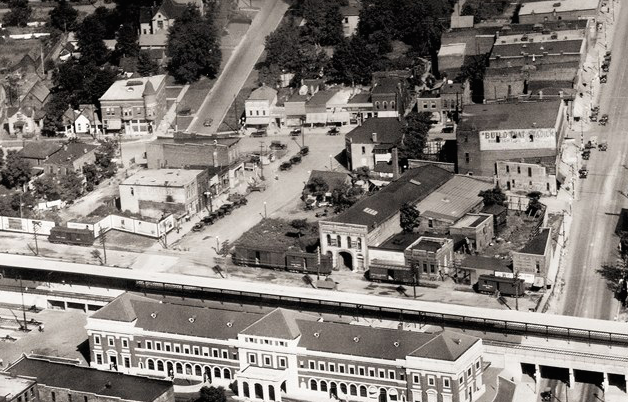North First Street Corridor, Champaign
North First St., Champaign, IL
North First Street Corridor is the oldest business district in Champaign, dating to the 1850s. A triangular area that originally included East Main Street, University Avenue, and the first two blocks of North First Street, it bordered an integrated working-class neighborhood called Germantown.
Since its early years, African Americans lived, worked, and owned businesses there. Early Black businesses included barbershops, skilled trades, small restaurants, taverns, and vendors. Enterprises like Columbus Green’s barbershop at 109 E. University Avenue were in operation by the 1870s. As the district expanded, so did types of Black businesses, including the Majestic Theatre, an African American movie house and Vaudeville theater operating in the 1910s at 79 E. Main Street.
After World War I, the adjacent northeast neighborhood increasingly became African American as restrictive covenants and redlining kept them out of developing subdivisions and other neighborhoods. It became known as the North End. By the 1940s, North First Street Corridor—called the Black Downtown—was the main commercial focus of the Black neighborhood. It had become the gateway and face of the North End, attracting Black businesses like Harris and Dixon Taxi Cab Company located on a former island at Main and First Streets. In 1943, Prince Hall Mason’s Lone Star Lodge #18 bought the buildings at 208 and 210 N. First Street, moving from Market Street in downtown Champaign. By the 1950s, over 30 Black businesses operated there. In 1951, Roscoe Tinsley’s Cleaners moved to the first floor of 208 N. First Street, and operated for 20 years.
The 1960s and 1970s saw a transition as older businesses were passed or sold to younger generations. At the same time, the corridor had physically declined mainly due to lack of investments in its infrastructure from public and private capital. Starting in the 1970s, urban renewal initiatives demolished dilapidated buildings leaving vacant lots. Businesses closed, leaving vacant buildings, and parking lots took up valuable commercial real estate. Private support lapsed. What was meant to inspire the redevelopment of the North First Street Corridor left it a ghost of its former self.
Despite it all, the Corridor holds memories of successive Black entrepreneurship. It, like the North End neighborhood, conveys a sense of past and present self-reliance. Through the history of Champaign, it contributed to the twin cities’ economy.
This trail stop is sponsored by:
Decade:
1850-1859
Location(s):
- Champaign, Illinois
Additional Champaign Trail Sites


